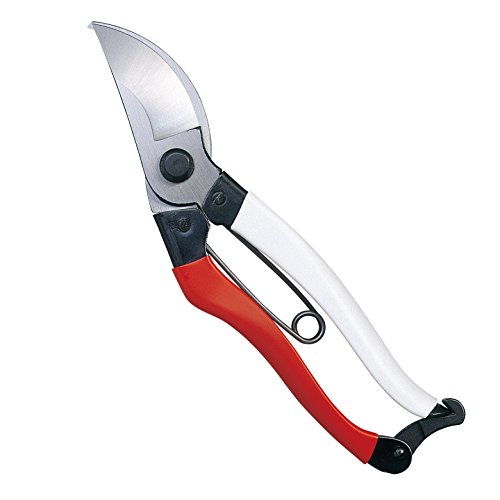How to prune watermelon plants – an ideal solution for growing the crop in small spaces
Pruning watermelon vines can be a risky business, but there are some potential benefits to discover

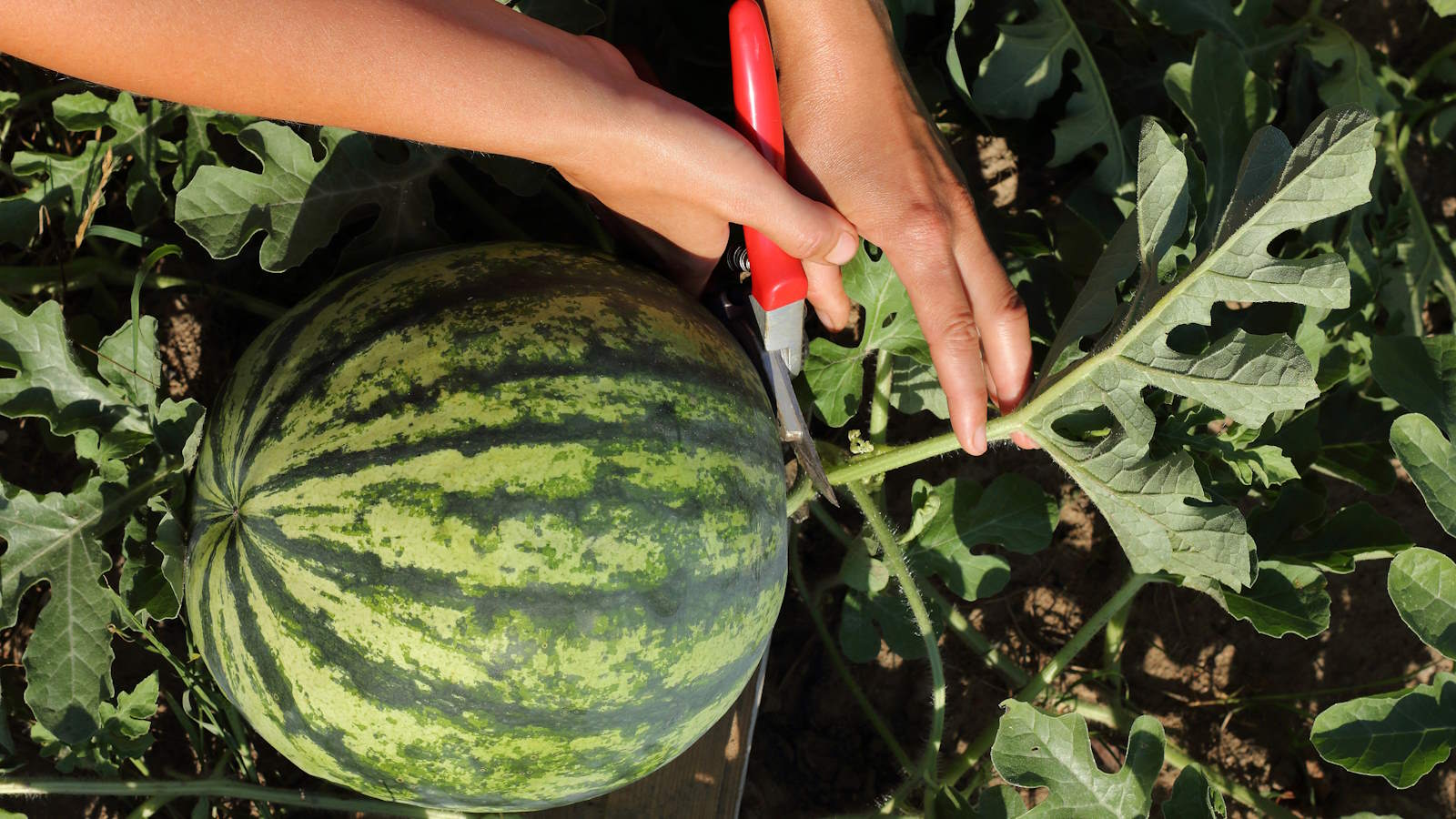
Growing watermelons at home means you can enjoy this summer favorite complete with the immense satisfaction that you grew and harvested it yourself. To do so successfully, the plants want lots of warmth and sunshine to ripen fruits and also a lot of space to spread into.
A lack of space for the sprawling vines can often put a stop to many people’s ambitions of growing watermelon. That is where watermelon pruning can come in handy and a little bit of cutting during the summer can make the plants more suitable for smaller spaces.
Watermelon pruning is not a mandatory part of cultivating the crop and can even be a bit of a gamble. However, a little bit of trimming can control the size and spread of plants and even reward you with superior watermelons.
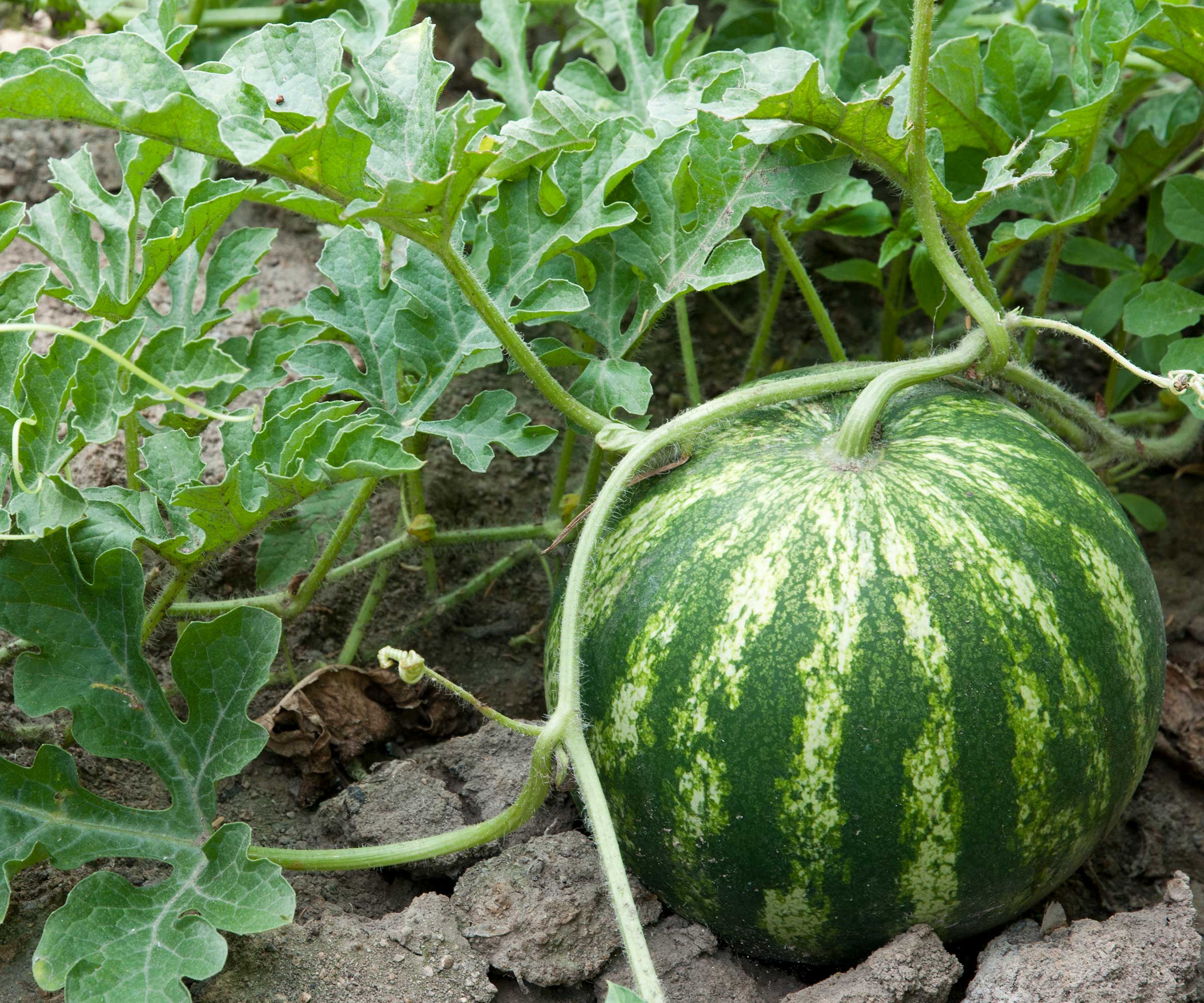
Will watermelon pruning be for you?
The idea of pruning watermelon plants may be new to you - perhaps you have even grown watermelons in your vegetable garden before and never contemplated trimming. To help make up your mind about watermelon pruning, we’ll take a close look at why, when, and how you may consider adding this task to your summer gardening checklist.
Should you prune watermelon plants?
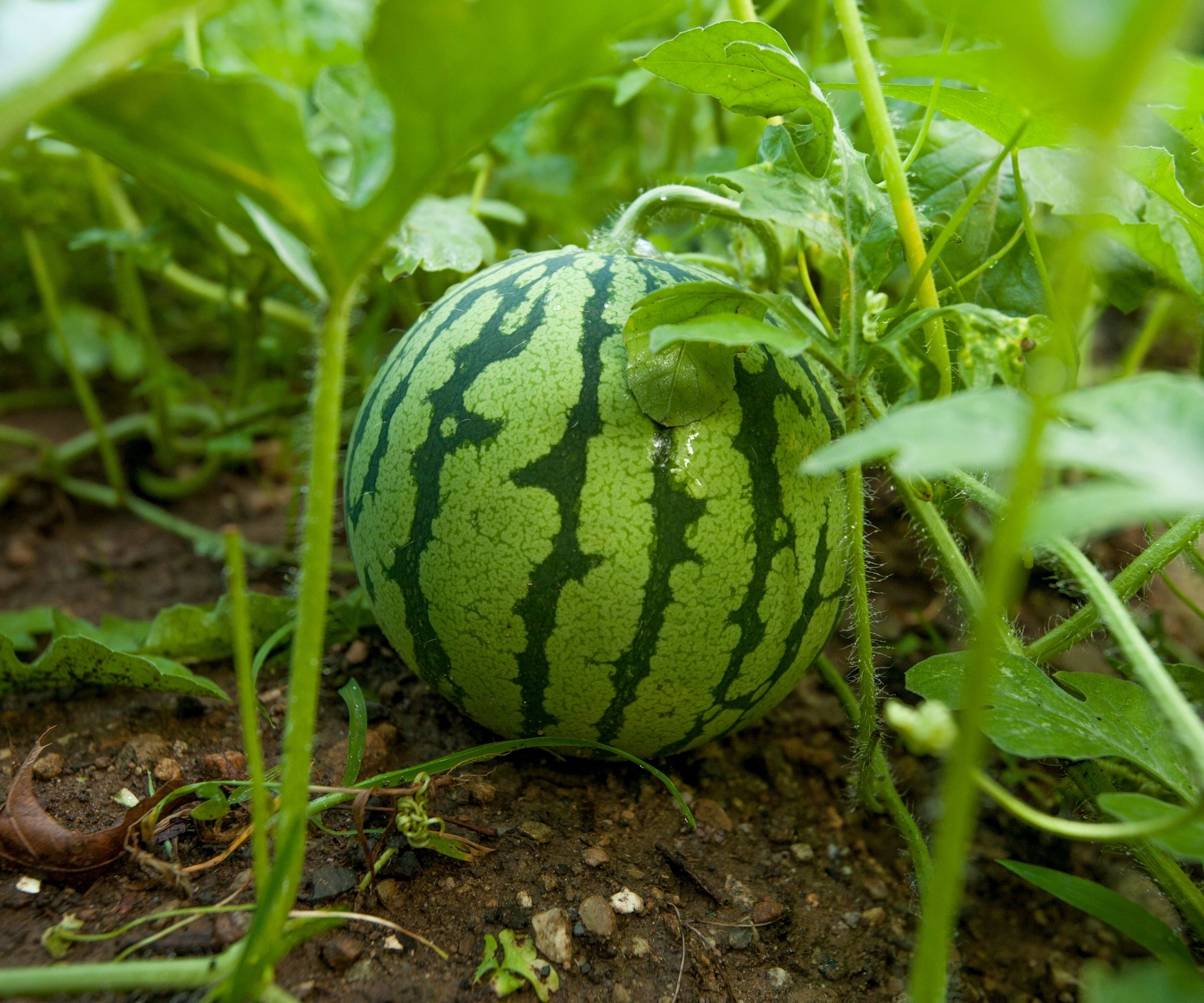
Pruning watermelons is optional, rather than essential when growing the crop. There are benefits to watermelon pruning, but also potential drawbacks to be aware of.
The main benefit is space-saving. Watermelons are large plants, their sprawling vines can reach over 10 feet, depending on the variety. Therefore, pruning the vines can be important when growing watermelons in a small vegetable garden.
As well as controlling the size, Reese L. Robbins, gardener and founder of Just Pure Gardening, adds that pruning watermelon plants can also ‘improve fruit quality’ in three key ways. He says:
Design expertise in your inbox – from inspiring decorating ideas and beautiful celebrity homes to practical gardening advice and shopping round-ups.
- Pruning can help reduce the risk of fungal diseases by improving air circulation around the plant.
- Removing excess foliage allows more sunlight to reach the fruits, enhancing their sweetness and overall quality.
- By limiting the number of vines and fruits, the plant can concentrate on producing larger, healthier watermelons.
There are potential positives to watermelon pruning, but it does not come without any risks. Trimming the vines may reduce the number of flowers, which could affect pollination. Also, pruning watermelon vines may result in the plant using energy to send out replacement runners rather than developing fruit.

Reese is a gardener, writer, and founder of JustPureGardening.com. Just Pure Gardening is full of fruit and vegetable growing guides, garden ideas, and garden product reviews.
When to prune watermelon vines
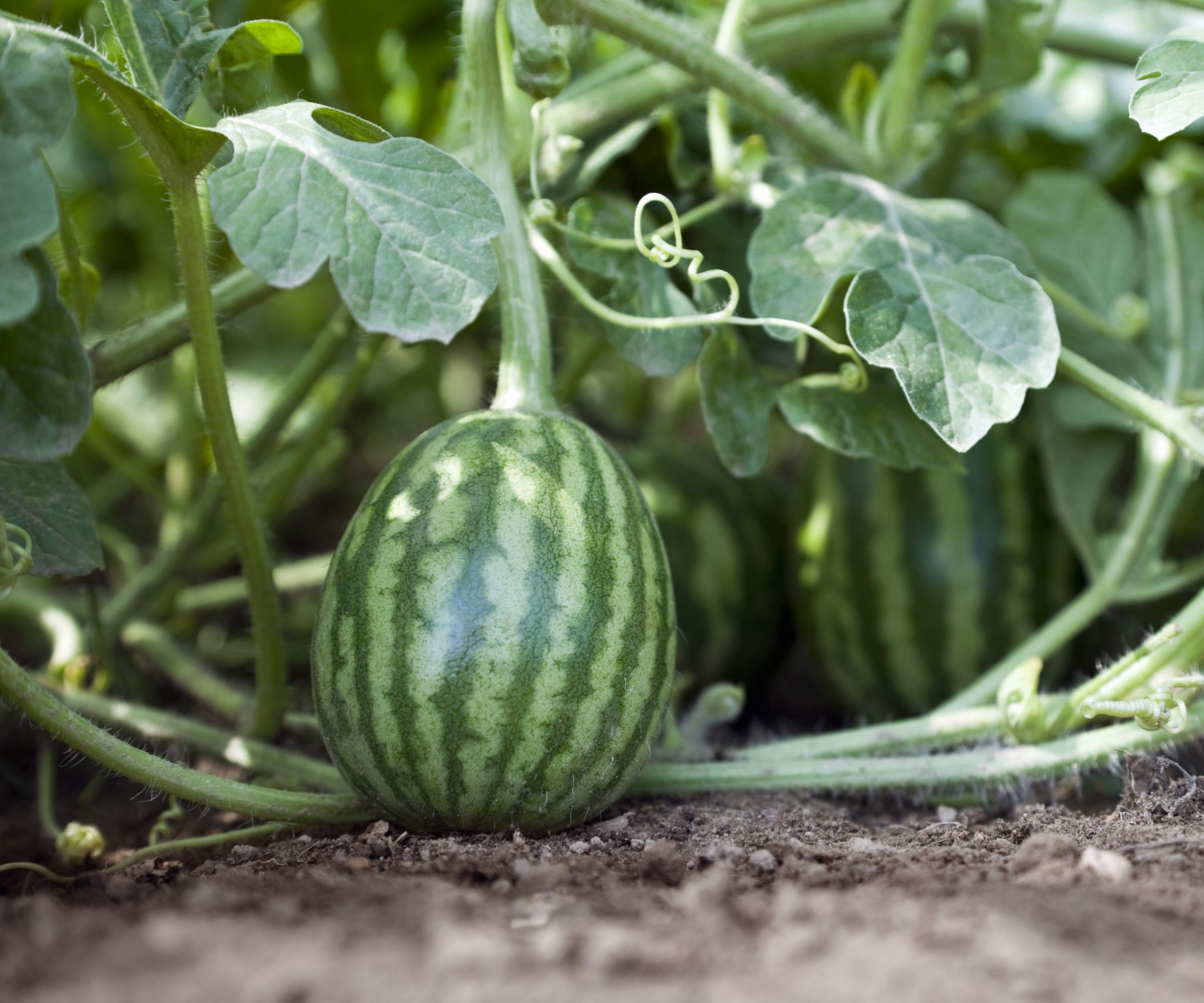
Watermelon pruning can be done throughout the season in varying shapes or forms. The best time to plant a watermelon comes in spring, a few weeks after your last frost date, and Reese L. Robbins advises how the best time to prune is early as ‘the vines are still young and flexible’.
‘This usually occurs once the plant has established itself but before it starts to flower and fruit heavily,’ he adds. ‘Pruning later in the season can stress the plant and reduce fruit production.’
Pruning just after the plants start flowering prevents the issue of negatively affecting pollination and ensures you have watermelons to pick. Trimming too early, before flowering, would be a pruning mistake that can leave you with a poor crop, or no watermelons.
Kiersten Rankel, garden expert and botanist for the plant app Greg, claims: ‘The best time to start pruning is when vines reach 2-3 feet long, usually 3-4 weeks after planting. You can continue to prune as needed throughout the growing season.’
There are valid reasons to continue pruning throughout the season. Reese suggests: ‘If the watermelon vines start to take over your garden at any stage, it's better to prune them to prevent them from suffocating other plants.’ Pruning watermelon vines will help to boost airflow throughout the plant and can be done throughout the season.
Regularly inspect plants to identify overcrowded areas. Also, if you spot any dead, diseased, or damaged leaves, or if any fruit starts to show signs of rotting, these should be pruned off during the summer when identified.

Kiersten Rankel is a certified Louisiana Master Naturalist and regularly volunteers with local community gardens and non-profits to help restore critical ecosystems along the Gulf Coast. She earned her master's degree from Tulane University in Ecology and Evolutionary Biology after her undergraduate degree in Environmental Biology, also from Tulane. In her spare time, she enjoys hiking and tending to her 150+ houseplants and vegetable garden.
How to prune watermelon plants
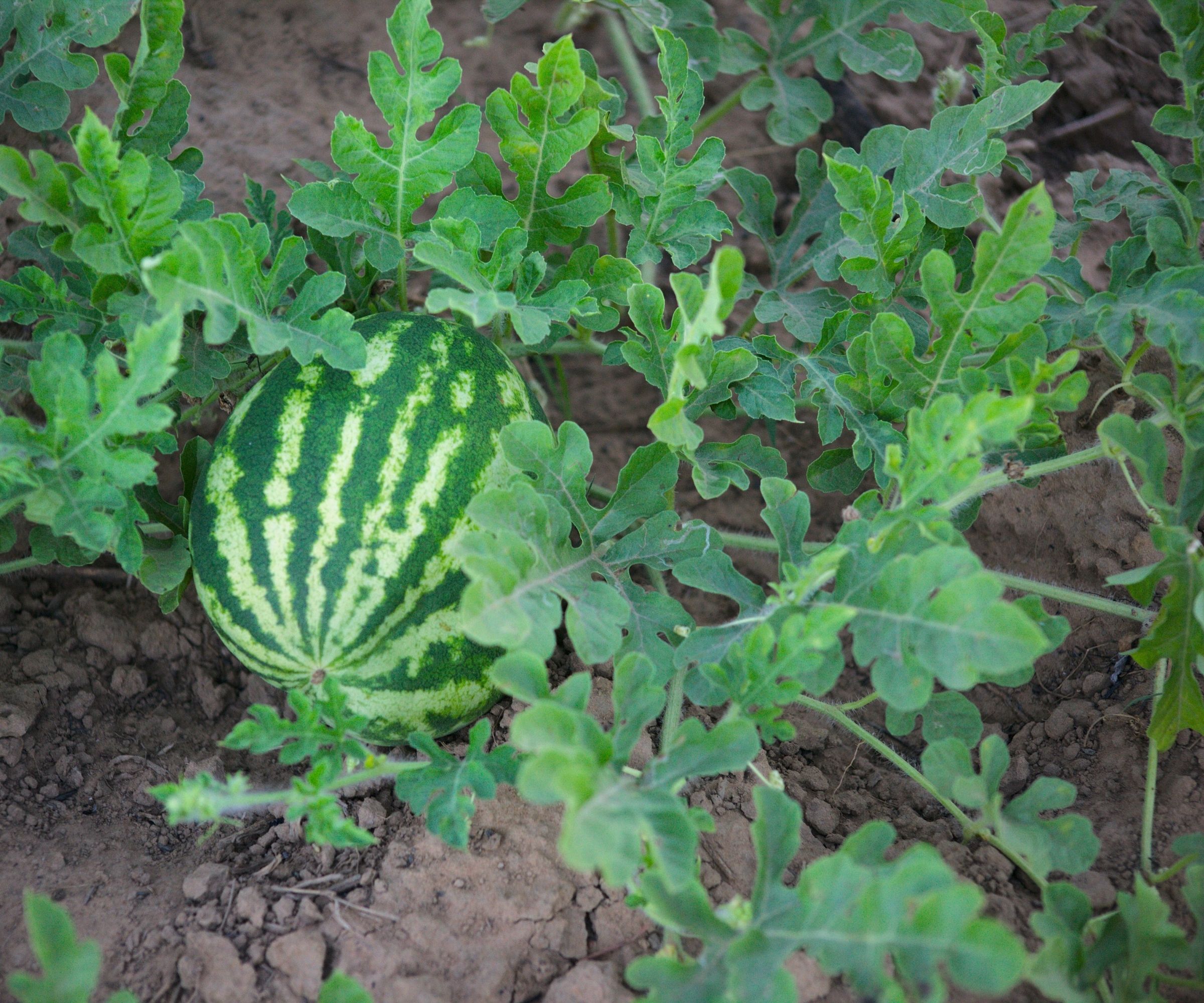
Before doing any watermelon pruning, ensure your pruning shears are clean and sharp. Properly maintained and sanitized garden tools help you make clean, precise cuts and reduce the risk of diseases. A pocket-sized blade sharpener, available at Amazon, can help keep any tools sharp in the garden.
Always remember to show restraint when pruning watermelon vines. The plants need foliage for photosynthesis and removing too much can stress the plant and affect its growth. Finally, do not do any watermelon pruning when the vines are wet, as this can increase their susceptibility to fungal problems.
There are four key areas of watermelon pruning:
- Locate the main stem that grows out from the center of the plant. It will be the thickest and longest on the plant. Kiersten Rankel advises: ‘To prune effectively, focus on the main vine and trim back side shoots’.
- Secondary vines grow off the main stem and can divert energy from it. Trimming the lateral vines back can concentrate energy back into developing fruits. ‘Leave about 10-12 leaves on each side vine before pinching off the growing tip,’ says Kiersten. ‘This encourages the plant to put energy into fruit rather than more leaves. ' Any secondary vines that do not bloom, or appear unhealthy, are best removed from the plant
- Once the plant starts developing fruit post-flowering, inspect and select 2-3 healthy fruits to keep on each stem. Remove excess flowers and small fruits so the plant can focus all the energy on developing the chosen watermelons
- Regularly inspect the plants. Any crowded areas can be lightly trimmed to improve air circulation and stop the plant from suffocating others. Also trim off any damaged or diseased parts of stems or foliage that are yellowing or showing signs of fungal diseases, such as powdery mildew. Removing excess leaves will allow more light in to help ripen fruits, but only remove small numbers of leaves at a time
FAQs
How many watermelons should I leave on a vine?
It is common best practice to leave 2-3 watermelons per vine and pinch off all the others. This allows the plant to focus its energy on developing a small number of full-sized watermelons to harvest.
Once you have enjoyed a slice of delicious homegrown watermelon, you can save watermelon seeds to plant and grow next spring. As long as the variety is an heirloom or open-pollinated one - as hybrid seeds can be more unpredictable - it is simple to collect the seeds. When stored properly, they can be viable for up to five years.

Drew has worked as a writer since 2008 and was also a professional gardener for many years. As a trained horticulturist, he worked in prestigious historic gardens, including Hanbury Hall and the world-famous Hidcote Manor Garden. He also spent time as a specialist kitchen gardener at Soho Farmhouse and Netherby Hall, where he grew vegetables, fruit, herbs, and cut flowers for restaurants. Drew has written for numerous print and online publications and is an allotment holder and garden blogger. He is shortlisted for the Digital Gardening Writer of the Year at the 2025 Garden Media Guild Awards.
